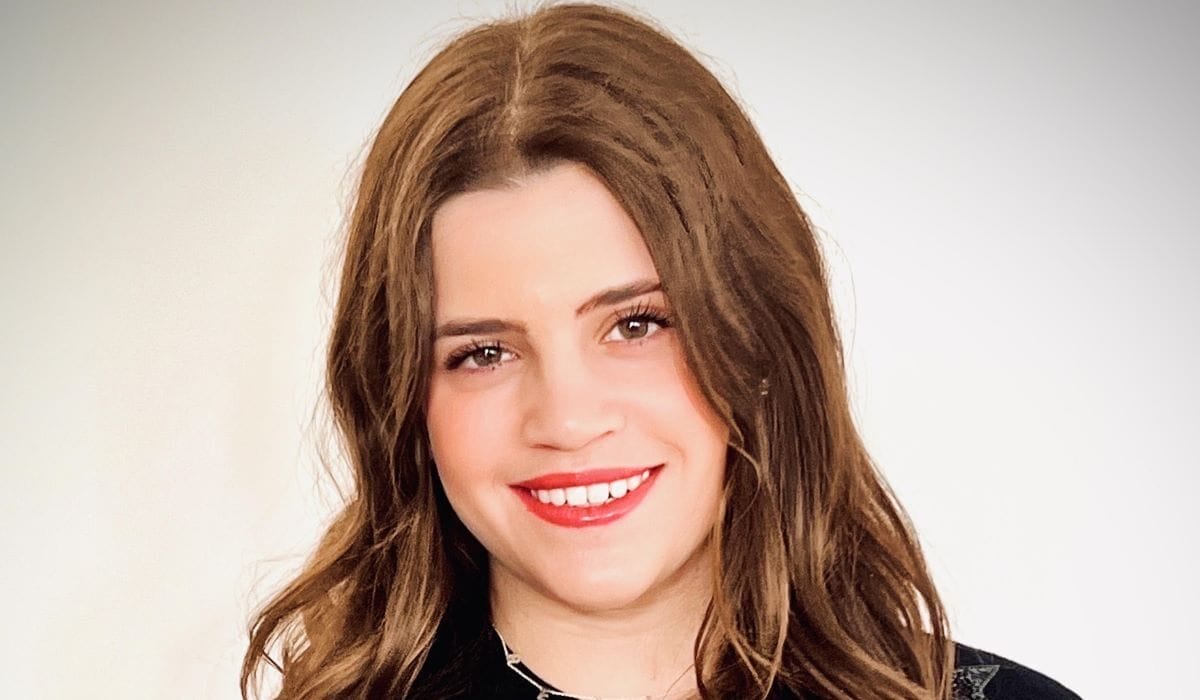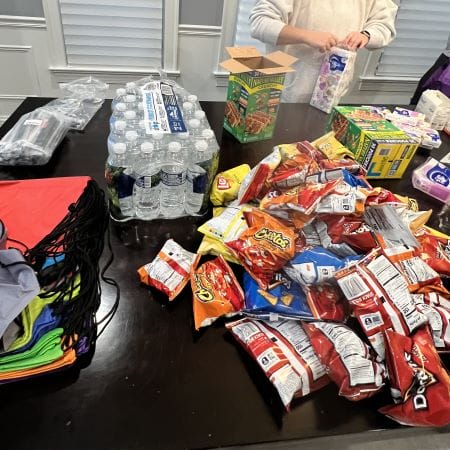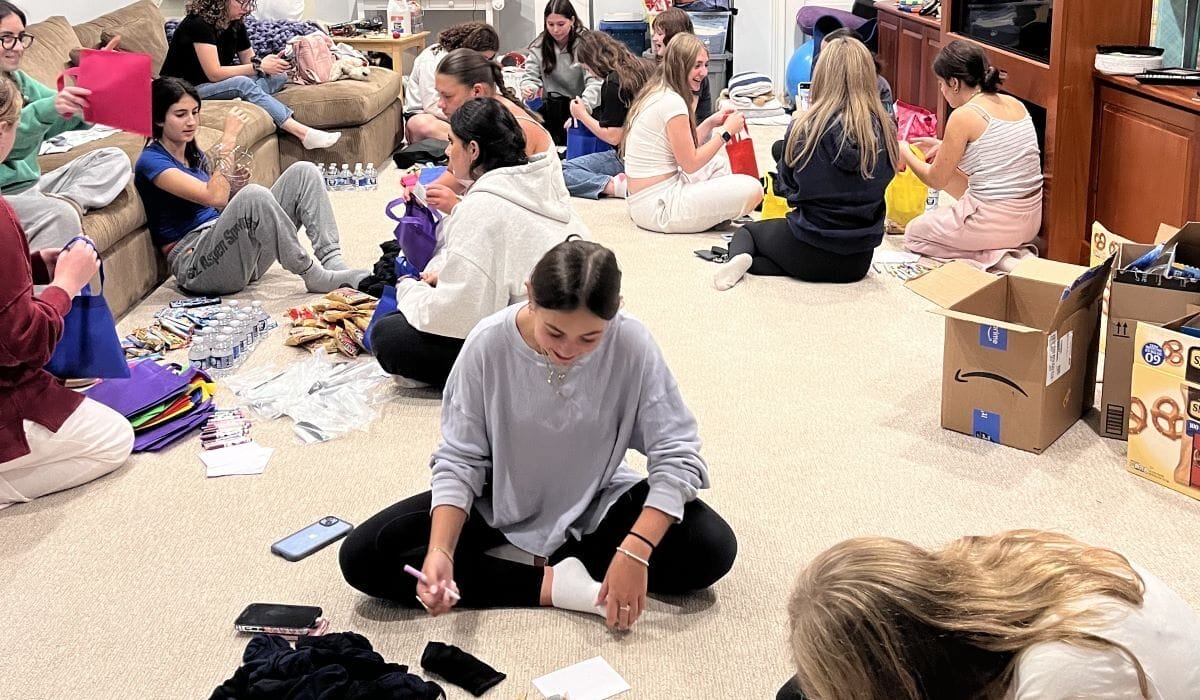Living With Dignity While Living Outside

Meet Daily Point of Light Award honoree Bella Brown. Read her story, and nominate an outstanding volunteer or family as a Daily Point of Light.
There are more than 150 million people worldwide who don’t have homes to live in. Seventeen-year-old competitive dancer Bella Brown, was confronted with that reality early in life growing up in an urban area. In 2020, she and her younger sister began handing out “care bags” full of snacks and useful items to people struggling, but a year later, the issue became personal when their mom revealed that she had a brother, and he was unhoused.
After meeting her uncle, Bella’s dedication to those without a home increased. As did her care bag production. She and her sister founded Living Outside to offer material support and encourage direct engagement and education as a way to reduce associated prejudice. In four years, Living Outside has embraced more than 150 volunteers who, together, have distributed 2500+ care bags. Bella’s compassion and drive to chase evidence-based strategies has inspired 18 new chapters around the world.
What inspires you to volunteer?
There are so many things that you have to wait until you’re older to do, but the ability to be a nice person or to solve a problem is available at any age. I’ve tried my best to use the resources and opportunities I have to solve problems I’m passionate about.
Where did the inspiration to create Living Outside come from?
Growing up in Chicago and seeing a lot of homelessness always had a deep impact on me. Before I was able to understand all of the factors that lead to it, I was confused why society had allowed it to happen. Things shifted into something bigger when I learned about my uncle. When we flew out to where he was living in Beverly Hills to spend a weekend with him, he’d been unhoused for about eight years, but he had a vibrant and welcoming community that he’d curated.
It allowed me envision a society where, instead of walking past someone who’s living on the street or avoiding eye contact, we acknowledge one another. That was the impetus behind the organization. Jay considered himself someone who lived outside. He passed away a couple months after our visit, and a lot of what we do now is in his honor.
Tell us about your volunteer role with Living Outside.
I’m the co-founder and president. What we do is twofold. We distribute supplies–food, water, hats, gloves, hygiene kits,

handwritten notes, etc.–directly to those who are living outside. Volunteers who assemble care bags at distribution events also hand them out. And we recognize that unhoused people are humans and have social relationships, so we include stamped postcards with a pen. That allows the care bag recipient to reach out to someone they’re hoping to reconnect with.
We often include multiples of items or give someone multiple bags so they can give one to a friend. You receive a serotonin boost when you’re able to positively impact someone else, and we want to give that to people living outside. It’s empowering when you’ve been in a position of receiving aid for so long to get an opportunity to be generous.
Our second mission is to destigmatize homelessness through advocacy and education. We’re in the midst of partnering with different organizations to increase awareness. We also hand out informational resources, run webinars and write a blog. As an AP research student last year, I found that care bag distribution reduces levels of individual stigmatization as well.
What is something that you find people often overlook homelessness or get wrong?
In my family, it was always natural for us to ask someone if we could buy them a meal or to introduce ourselves. Arden and I kept care bags in our car and, whenever we were out, would distribute them. Other people thought it was a great idea until they realized that we didn’t take them to shelters but handed them directly to people in need.
There’s a disconnect. People have good intentions, but they also have fear that is preventing them from engaging with the community they hope to impact. When we visited Jay, the number of people he had in his circle who were open to allowing him to be a part of their lives was touching. Jay, despite his circumstances, was happy. He attracted people regardless of housing status, and his community improved his quality of life. Living Outside isn’t just giving someone supplies; we’re telling them they have a community that cares about them.
What are your long-term plans or goals for the organization?
We also want to shift the narrative and decriminalize the experience of being unhoused. There are a lot of policies that serve to criminalize actions that unhoused people do just to survive–sleeping in a public space, begging, loitering—without solving the issue.
And we want to help people who are ready find a home. My uncle had tried other environments, and to him, finding that community in Beverly Hills was the right move. He wasn’t ready to find a home. It’s okay to support, acknowledge and love those people from afar until they make the decision. Living outside is incredibly nuanced, and we have to approach it as such.

What are some ways you recommend starting a conversation?
Action can be as simple as a smile. Oftentimes, when someone is asking for food or money and you have nothing to offer, say, “I’m so sorry. I don’t have anything, but I hope you have a great day,” or introduce yourself and ask for their name. Tell them you’d love to hear their story. Those are worldview-changing.
What’s been the most rewarding part of your work?
So many people, in tears, have told me something that they wanted to get off their chest and never felt like they had the opportunity to, because no one stopped and asked. Listening is powerful, and we don’t do it enough. It can transcend barriers and bring communities closer.
What do you want people to learn from your story?
Anyone, regardless of age or background, can work towards acknowledgement. I encourage people to rethink their internal reaction next time they encounter someone living outside and shift it towards one that is helpful. I hope they will one day get to a point where they, too, are able to sit down with someone and listen.
Do you want to make a difference in your community like Bella? Find local volunteer opportunities.